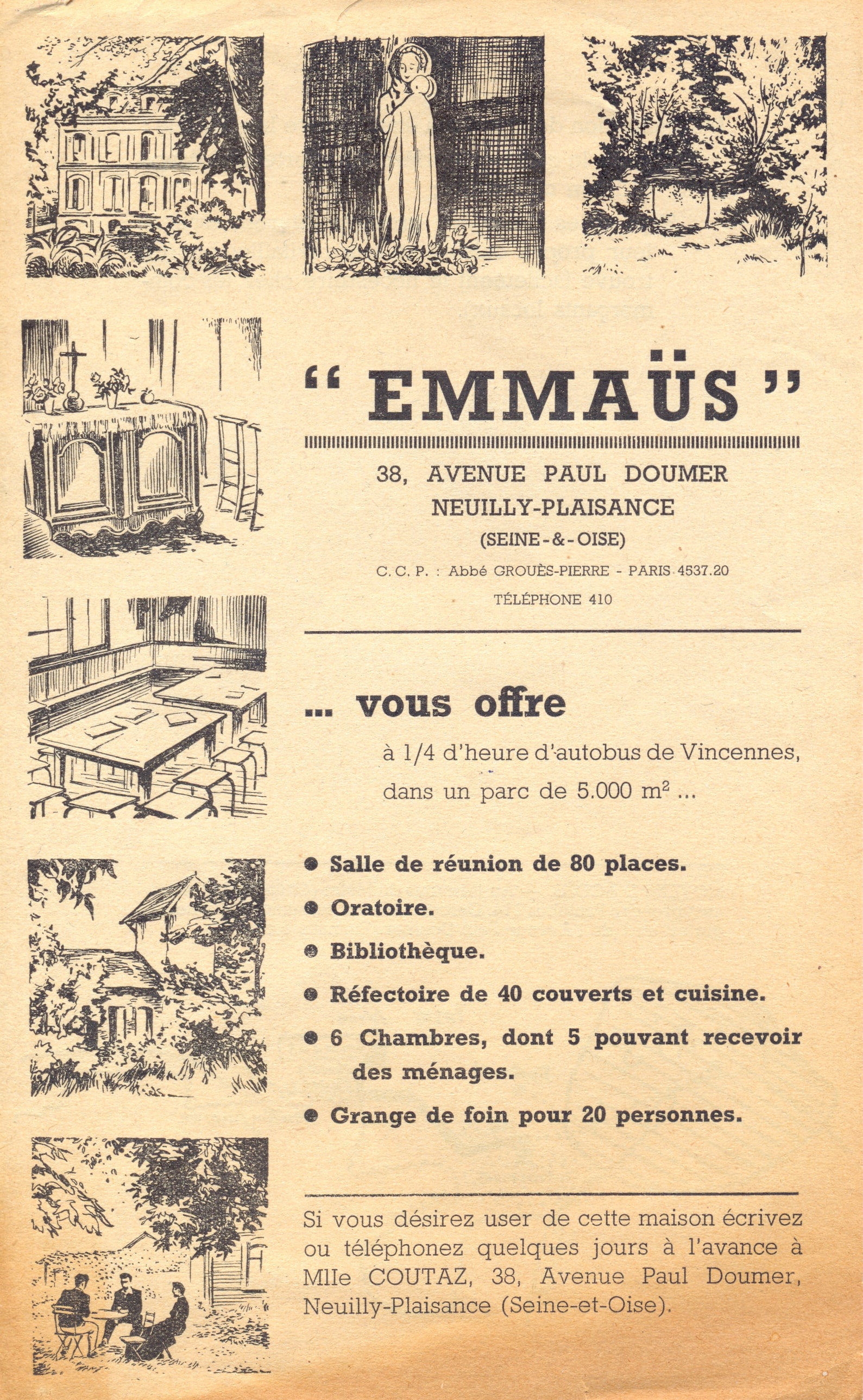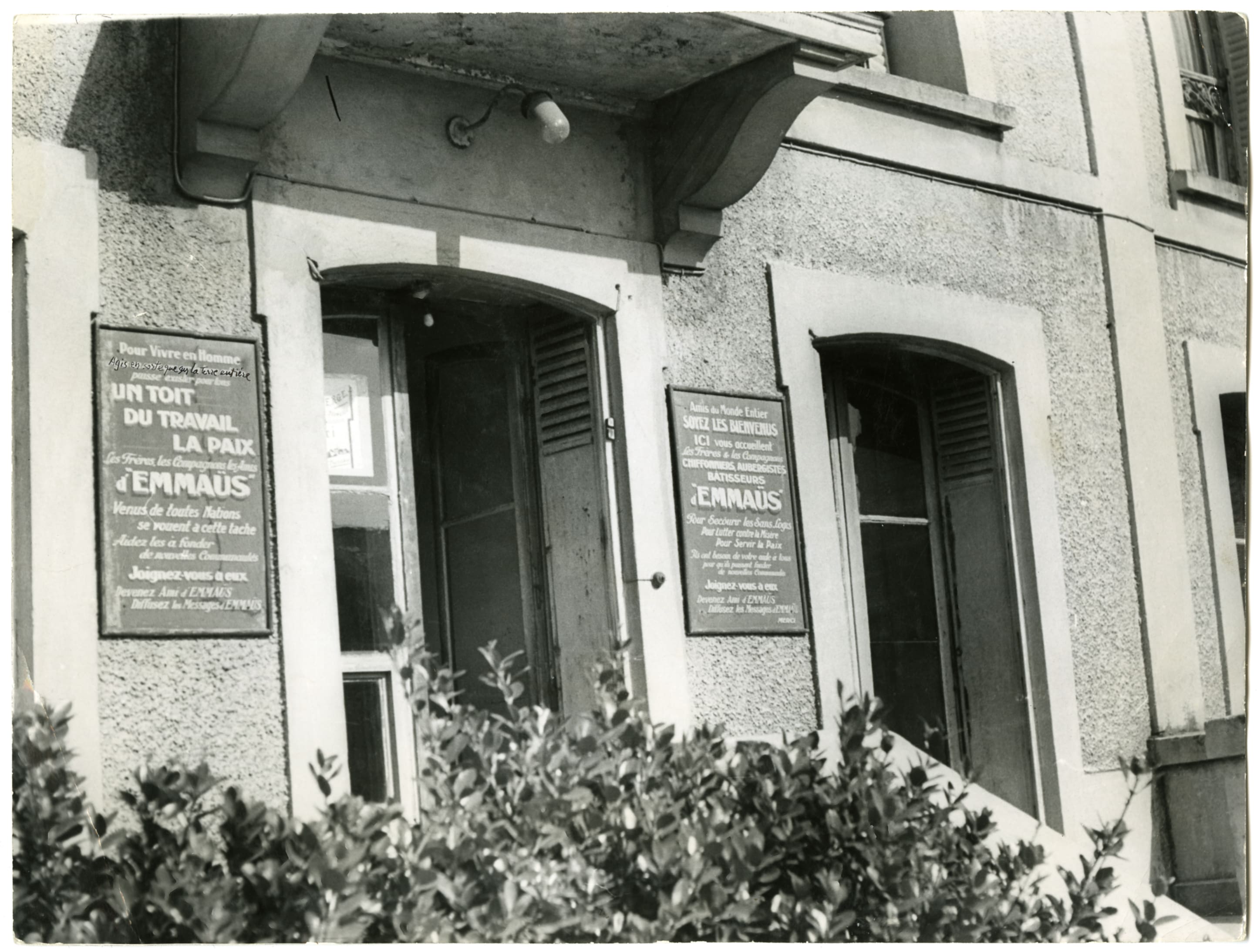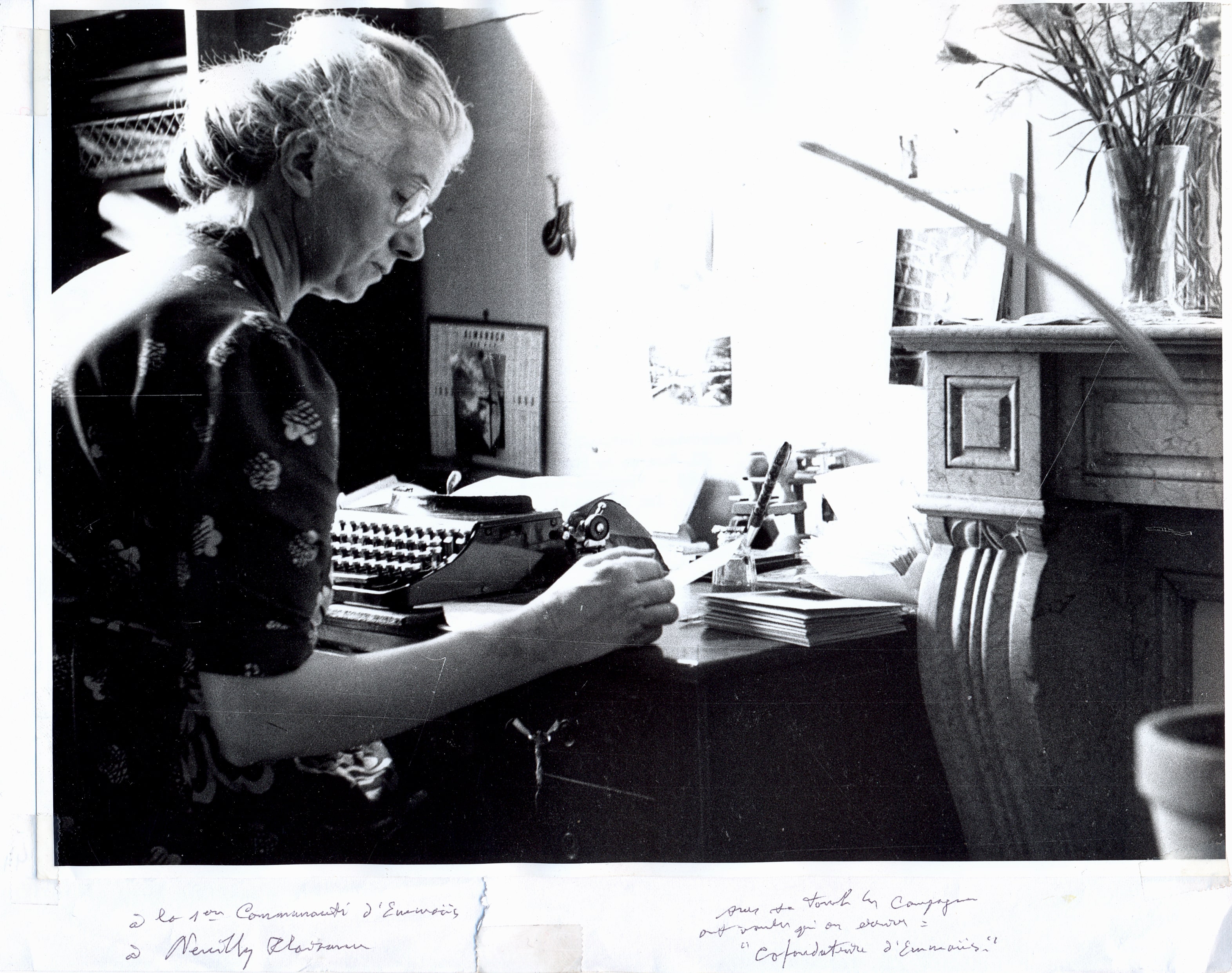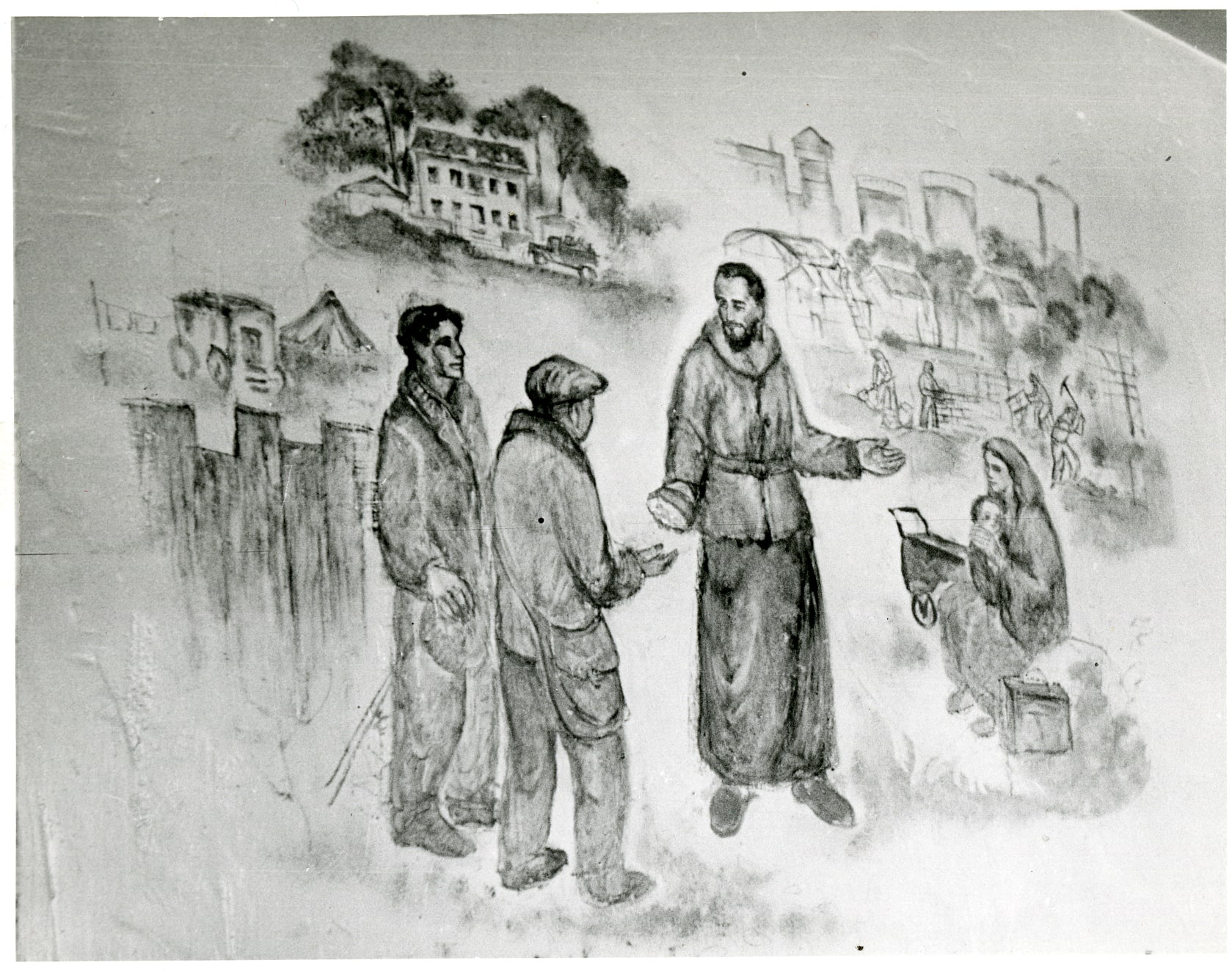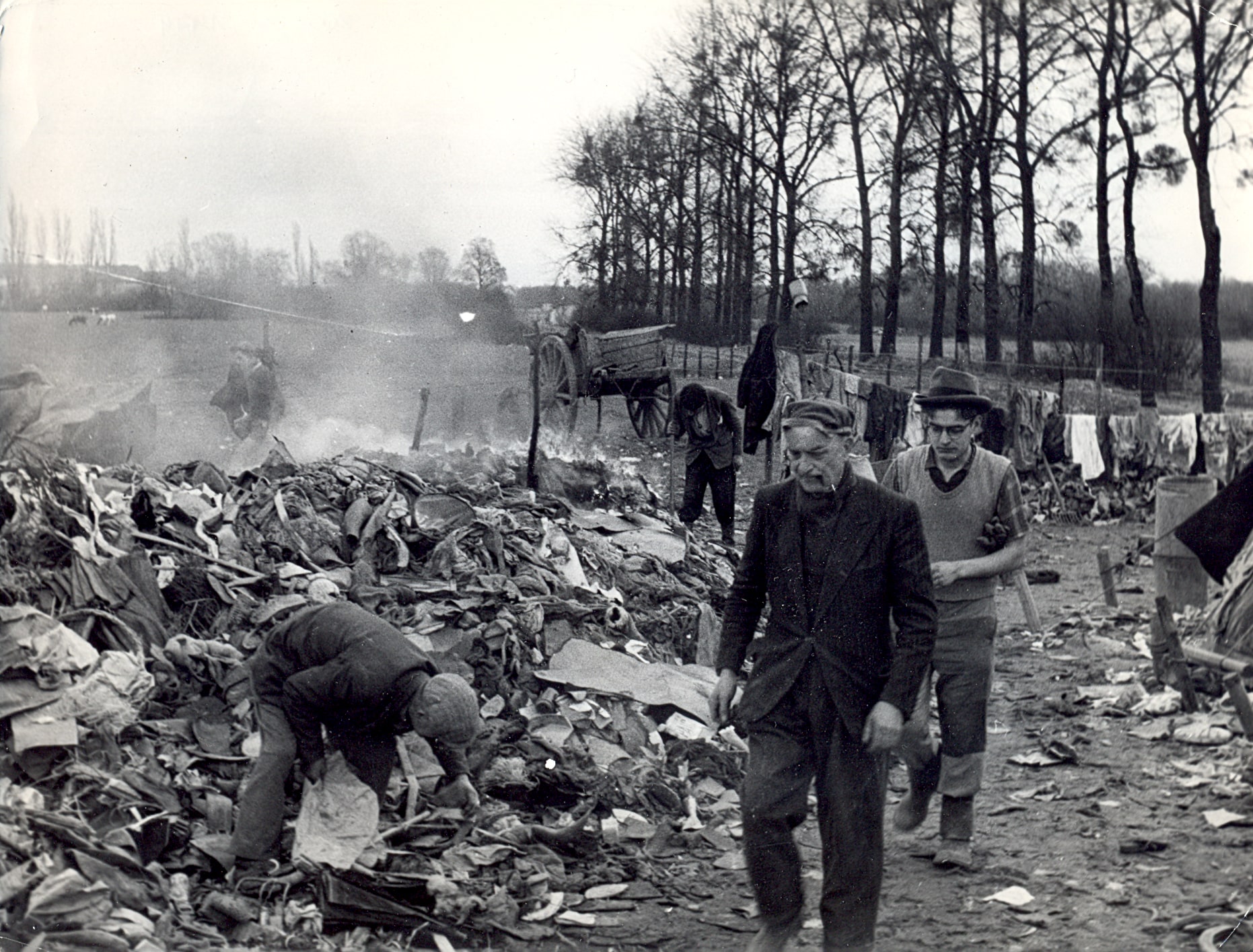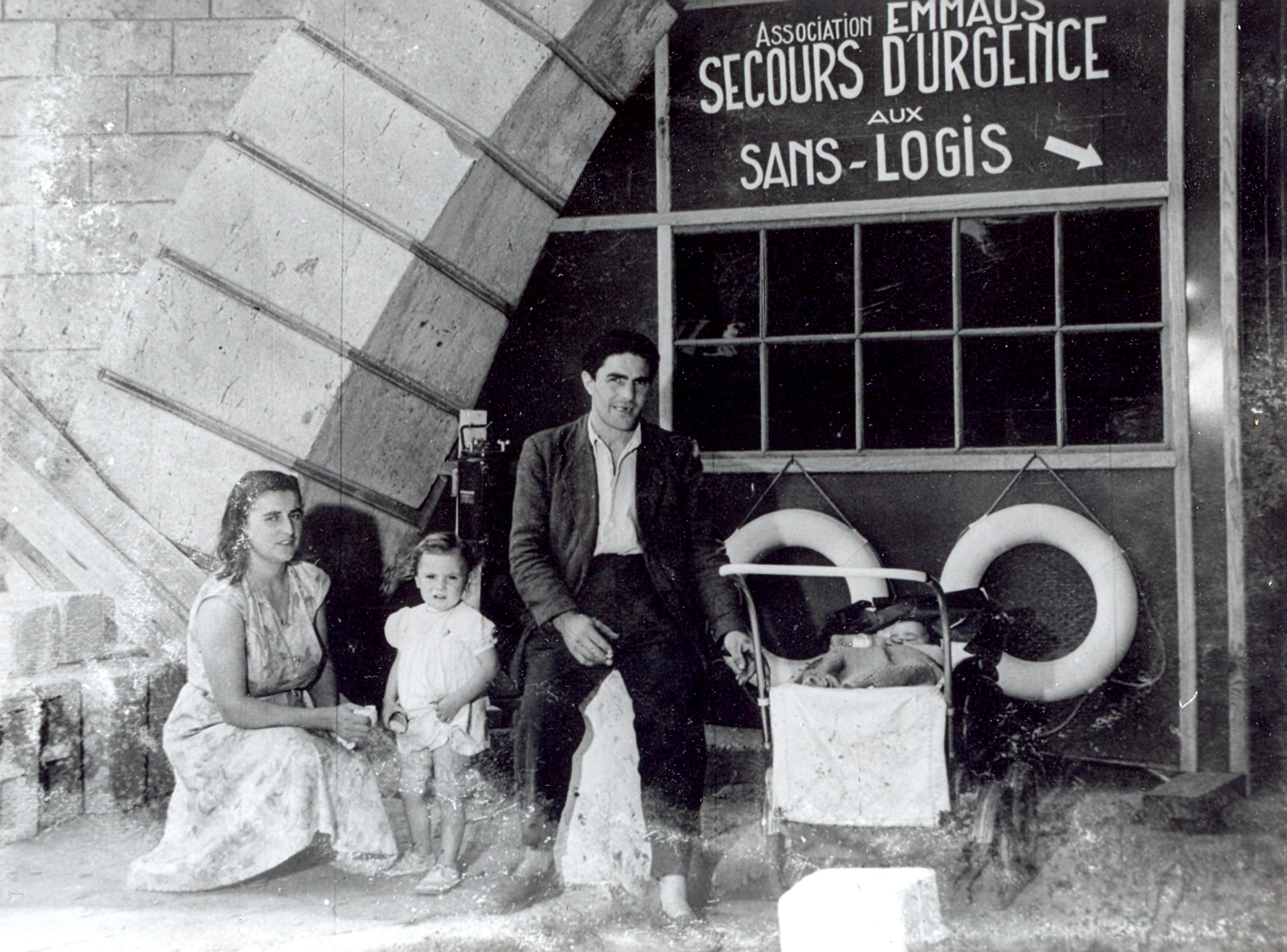Founding of Emmaus (1947-1954)
In 1949 Abbé Pierre met Georges Legay, who became the first Emmaus companion. The first community was set up in Neuilly-Plaisance. Others followed shortly and the ‘companion builders’ had one key priority: to provide the best possible accommodation for people without housing.
His status as an MP didn’t stop Abbé Pierre from being a man of action on the ground. In 1947, he rented out a large run-down house in Neuilly-Plaisance, in the eastern suburbs of Paris. Marked by the war that had just ended, he opened an international youth hostel to accommodate young men and women “whose fathers, not long before, were killing each other and who would discover, with peace newly restored, the extent of the abomination of which Man had been capable”. He called this house “Emmaus”.
His life took another twist in the autumn of 1949. Lucie Coutaz and Abbé Pierre welcomed Georges, a former prisoner who had lost all hope and tried to commit suicide. “That is how Emmaus was born. Because, without giving it a second thought, I spontaneously decided to go against the very notion of charity. Instead of saying, you are miserable, I am going to give you housing, work and money, circumstances made me say quite the opposite. I could only say to him, because it was true, “You are totally miserable and I have nothing to give you (…). But you, seeing as you want to die, you´ve got nothing to lose. “So why not help me help others? (…) If ever that principle were forgotten, Emmaus would cease to exist. It´s above all about saying to people who see themselves as a burden, who don’t see any point to their lives, “I have nothing to give you, except my friendship, and my plea to you to help me so that together we can help save others”.”
Georges became the first Emmaus companion. The house in Neuilly-Plaisance quickly welcomed others and this is how, without even realising it, the first Emmaus community was born. In December 1949, a few days before Christmas, he took in the first family, who had been evicted from their home.
Together with these companions, he started to build homes. The first home was completed in October 1950 and he then bought other land to build new homes. As he was not re-elected in June 1951, he lost his parliamentary expenses allowance, which the community had previously been living on. In December, the community’s funds dried up, so he decided to go begging outside theatre entrances. On learning this, a companion explained to him how he used to survive by going through the rubbish and salvaging what he could sell. Abbé Pierre decided to try this idea out and the companion-builders became rag pickers.
The resulting income was low, forcing him to buy cheap land to continue building houses on undeveloped land without running water. From then on, Abbé Pierre and the companions pitched tents and built makeshift shelters, and responded to the authorities who demanded to see his building permit, that they had “permission to live”.
To raise funding for his activities, in 1952 he took part in a gameshow on Radio Luxembourg, “Double or Quits”, winning 256 000 francs which he used to buy a van and some more plots of land.
